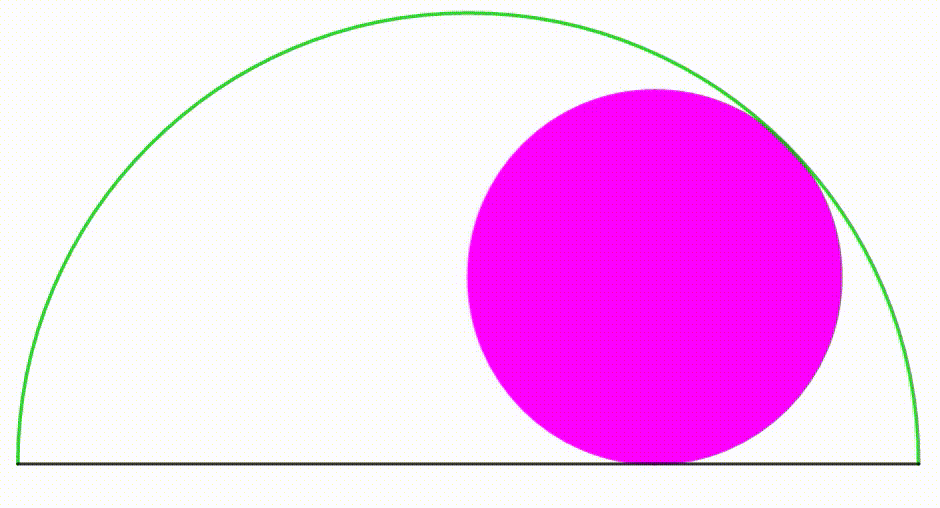Dynamic Geometry: P26
 The diagram shows a green semicircle with radius
. A blue rectangle and a purple circle are inscribed inside the
semicircle so they are tangent to each other at any moment. When the ratio of the purple circle's diameter to the perimeter of the blue rectangle is equal to
, the area of the rectangle can be expressed as
, where
and
are coprime positive integers. Find
.
The diagram shows a green semicircle with radius
. A blue rectangle and a purple circle are inscribed inside the
semicircle so they are tangent to each other at any moment. When the ratio of the purple circle's diameter to the perimeter of the blue rectangle is equal to
, the area of the rectangle can be expressed as
, where
and
are coprime positive integers. Find
.
The answer is 7.
This section requires Javascript.
You are seeing this because something didn't load right. We suggest you, (a) try
refreshing the page, (b) enabling javascript if it is disabled on your browser and,
finally, (c)
loading the
non-javascript version of this page
. We're sorry about the hassle.
Let the half the width of the rectangle be x . Then the height of the rectangle h = 1 − x 2 and the perimeter of the rectangle p = 4 x + 2 1 − x 2 .
Note that the center of the semicircle, the center of the purple circle, and the tangent point of the purple circle and semicircle are colinear. By Pythagorean theorem , we have:
( x + r ) 2 + r 2 x 2 + 2 r x + r 2 + r 2 r 2 + 2 ( x + 1 ) r + x 2 − 1 ⟹ r = ( 1 − r ) 2 = r 2 − 2 r + 1 = 0 = 2 ( x + 1 − x − 1
Then the ratio of the diameter of the semicircle to the perimeter of the rectangle:
2 x + 1 − x 2 2 ( x + 1 ) − x − 1 = 5 2 5 − 4
Solving the equation, we get x = 5 3 . Then h = 1 − 2 5 9 = 5 4 and the area of the rectangle 5 6 × 5 4 = 2 5 2 4 . Therefore a + b = 7 .